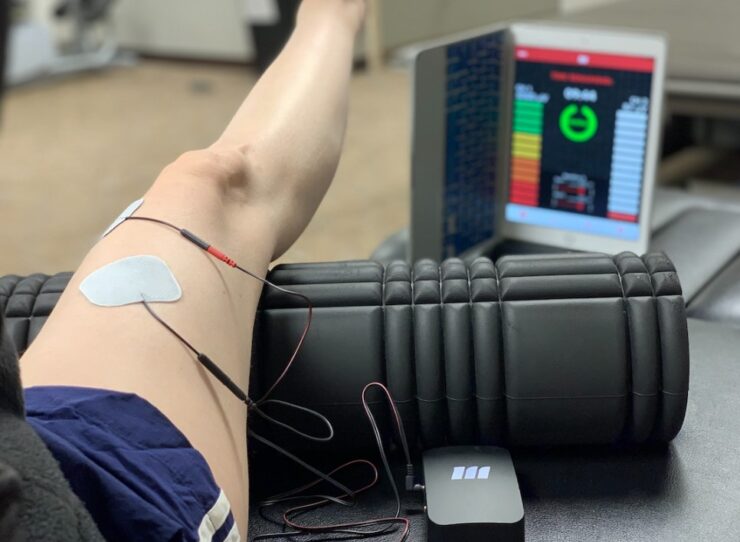Biofeedback has emerged as a powerful tool in enhancing the effectiveness of physical therapy. This technique involves using electronic monitoring to provide real-time feedback on physiological functions, allowing individuals to gain greater control over their bodies. By integrating biofeedback into physical therapy, patients can achieve more significant improvements in their recovery and overall well-being.
In this article, we will explore how biofeedback is revolutionizing physical therapy and its role in optimizing treatment outcomes.
What is Biofeedback?
Biofeedback is a process where individuals learn to control physiological processes by receiving real-time data on bodily functions such as heart rate, muscle tension, and skin temperature. This technique utilizes sensors that measure these physiological parameters and provide immediate feedback, allowing individuals to observe and modify their responses.
The primary goal of biofeedback is to help individuals gain awareness and control over physiological processes that are typically automatic.
How Biofeedback Enhances Physical Therapy

Improving Muscle Control
One of the primary benefits of biofeedback in physical therapy is its ability to improve muscle control. Through the use of sensors and real-time feedback, patients can monitor muscle activity and learn to regulate it more effectively.
This is particularly beneficial for individuals undergoing rehabilitation after an injury or surgery, as it helps them to regain strength and coordination. By visualizing muscle activity, patients can understand how their movements affect their muscles and make necessary adjustments to improve their performance.
Enhancing Pain Management
Pain management is a critical component of physical therapy, and biofeedback can play a significant role in this aspect. By using biofeedback, patients can learn to manage pain through relaxation techniques and by altering their physiological responses.
For example, biofeedback can help individuals reduce muscle tension, which can alleviate pain associated with conditions such as chronic back pain or arthritis. By incorporating biofeedback into their therapy sessions, patients can develop effective strategies for managing pain and improving their overall quality of life.
Accelerating Recovery
Biofeedback has the potential to accelerate the recovery process by providing patients with the tools they need to optimize their physical therapy regimen. By receiving real-time feedback on their physiological responses, patients can make informed decisions about their treatment and adjust their exercises accordingly.
This level of control and awareness can lead to more efficient and effective rehabilitation, allowing patients to recover more quickly and return to their daily activities.
Enhancing Motivation and Compliance

One of the challenges in physical therapy is maintaining motivation and compliance with the prescribed exercises. Biofeedback can enhance motivation by providing immediate and tangible results.
When patients see the impact of their efforts in real time, they are more likely to stay engaged and committed to their therapy. Additionally, biofeedback can help patients set realistic goals and track their progress, further encouraging adherence to their treatment plan.
Applications of Biofeedback in Physical Therapy
Biofeedback can be applied to various aspects of physical therapy, including:
- Rehabilitation after injury or surgery ─ Biofeedback can assist in the recovery process by helping patients regain muscle strength and control.
- Chronic pain management ─ Biofeedback can aid in managing chronic pain conditions by teaching patients relaxation techniques and pain modulation strategies.
- Stress management ─ Biofeedback can be used to help patients manage stress, which can have a positive impact on their overall physical health and recovery.
Case Study ─ Physical Therapy Wilkes Barre PA

Incorporating biofeedback into physical therapy can significantly enhance treatment outcomes. For example, in regions like physical therapy Wilkes Barre PA, biofeedback is being utilized to improve patient results and accelerate recovery. The integration of this technology allows for a more personalized and effective approach to physical therapy, leading to better patient satisfaction and improved overall outcomes.
Conclusion
Biofeedback is revolutionizing the field of physical therapy by providing patients with valuable insights into their physiological processes and empowering them to take control of their recovery. By improving muscle control, enhancing pain management, accelerating recovery, and increasing motivation, biofeedback offers a range of benefits that can lead to more effective and efficient physical therapy outcomes.
As the technology continues to advance, its applications in physical therapy are likely to expand, offering even greater opportunities for improving patient care and rehabilitation.
Incorporating biofeedback into physical therapy represents a significant step forward in enhancing treatment outcomes and helping individuals achieve their rehabilitation goals. With its ability to provide real-time feedback and empower patients, biofeedback is set to play an increasingly important role in the future of physical therapy.

